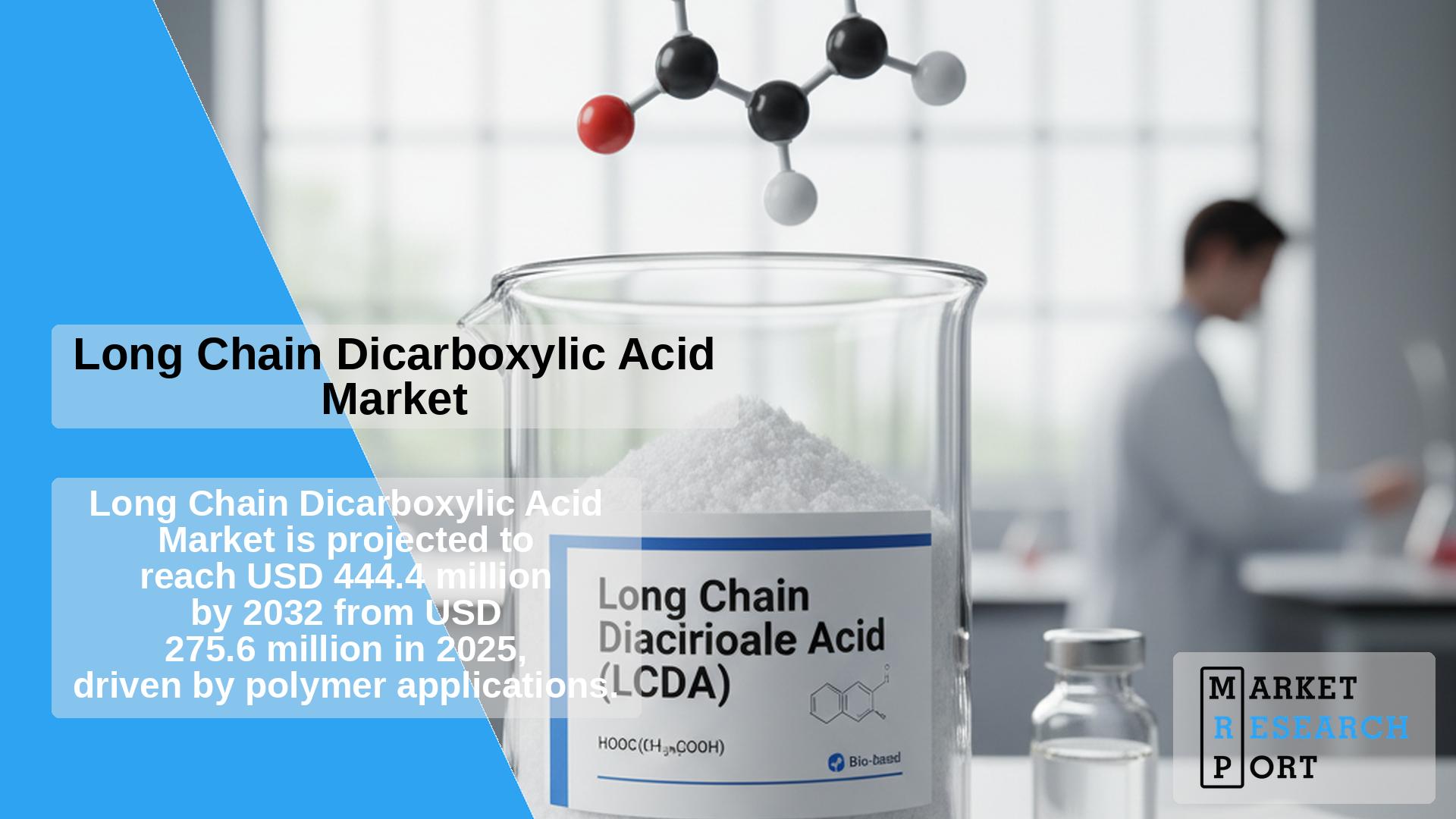
The global long chain dicarboxylic acid (LCDA) market reached USD 274.8 million in 2025 and is projected to touch USD 441.7 million by 2030, expanding at a CAGR of 8.2% during the forecast period. Growth is driven by the increasing use of long chain dicarboxylic acids in nylon, polyamide, lubricants, coatings, and corrosion inhibitor applications. Being a bio-based product manufactured through fermentation processes, LCDA has gained attention for its sustainability and reduced environmental footprint compared to petrochemical alternatives.
The rising emphasis on bio-derived industrial materials and strict regulatory frameworks promoting eco-friendly chemicals are encouraging large-scale adoption of LCDA. Its usage across powder coatings and lubricants highlights the shift in global manufacturing preferences toward materials offering superior durability, gloss, and environmental compliance. The favorable prospects for bio-based polymers and sustainable formulations are expected to enhance LCDA demand across multiple downstream industries.
However, high production costs and raw material price fluctuations remain critical challenges. Despite these constraints, ongoing R&D investment in fermentation technology and biocatalytic efficiency is expected to make LCDA production more cost-effective in the coming years.
Asia Pacific led the global LCDA market in 2025, accounting for 32.1% of revenue. Favorable government initiatives encouraging sustainable manufacturing, improving infrastructure, and growing demand from automotive and construction industries are driving market growth. Countries including China, Japan, and India have become key producers and consumers of LCDA-based polyamide and coatings, benefiting from skilled labor availability and competitive production costs.
Europe continues to maintain a strong focus on bio-based polymers and adherence to green manufacturing policies, ensuring growing LCDA utilization in coatings, adhesives, and engineering plastics. Meanwhile, North America’s progress is supported by increased research investment and a rise in biopolymer adoptions by automotive and architectural manufacturers.
The nylon and polyamide sector dominated the market with the largest share in 2025. Widely used in automotive components, packaging, and electronics, polyamides derived from LCDA offer improved properties such as tensile strength, fatigue resistance, and lightweight design benefits. The powder coatings segment is forecasted to grow at a CAGR of 8.5% from 2025 to 2030, driven by expanding infrastructure projects and increasing demand for corrosion-resistant coatings in construction and transportation industries.
The lubricants segment contributed noticeably to overall market share, accounting for 17.3% in 2025. LCDA-based lubricants are known for their higher thermal stability, oxidation resistance, and biodegradability. Additionally, applications in corrosion inhibitors, adhesives, and pharmaceuticals are strengthening due to LCDA’s compatibility and eco-friendly formulation profile.
The competitive environment is characterized by product innovation, collaborations, and strategic mergers among leading manufacturers to enhance capacity and technological capabilities. Bio-based chemical producers are strengthening their global presence through partnerships with automotive and industrial OEMs to cater to the surging demand for sustainable intermediates.
| Report Attribute | Details |
| Market Size Value in 2025 | USD 274.8 million |
| Revenue Forecast in 2030 | USD 441.7 million |
| Growth Rate | CAGR of 8.2% from 2025 to 2030 |
| Historical Data | 2019–2024 |
| Forecast Period | 2025–2030 |
| Quantitative Units | Revenue in USD million/billion, Volume in kilotons, CAGR from 2025 to 2030 |
| Report Coverage | Volume and revenue analysis, company ranking, growth factors, and emerging trends |
| Segments Covered | Application, region |
| Regional Scope | North America; Europe; Asia Pacific; Central & South America; Middle East & Africa |
| Country Scope | U.S.; Canada; Mexico; U.K.; Germany; France; Italy; Spain; China; Japan; India; South Korea; Brazil; Argentina; Saudi Arabia; South Africa |
| Key Companies Profiled | Cathay Biotech Inc.; INVISTA; Evonik Industries AG; Shandong Hilead Biotechnology Co., Ltd.; Henan Junheng Industrial Group Biotechnology Co., Ltd.; AECOCHEM; Capot Chemical Co., Ltd.; DuPont |
How large is the long chain dicarboxylic acid market in 2025?
The global LCDA market was valued at USD 274.8 million in 2025.
What is the growth rate of the LCDA market through 2030?
The market is projected to expand at a CAGR of 8.2%, reaching USD 441.7 million by 2030.
Which region holds the highest market share?
Asia Pacific led with a 32.1% share in 2025, driven by high regional demand and competitive manufacturing costs.
Who are the prominent players in the long chain dicarboxylic acid market?
Key manufacturers include Cathay Biotech Inc., INVISTA, Evonik Industries AG, DuPont, and Shandong Hilead Biotechnology Co., Ltd.
What are the main factors driving LCDA market growth?
Increasing adoption of LCDA in nylon, powder coatings, lubricants, and corrosion inhibitors, along with the global trend toward bio-based chemical production, are the primary growth catalysts.